New Amateur Satellites Expected to Launch on July 2, 2024
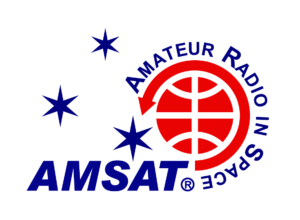 Joe Fitzgerald, KM1P, writes on the Sci-Tech ARS mailing list:
Joe Fitzgerald, KM1P, writes on the Sci-Tech ARS mailing list:a field organization of the National Association for Amateur Radio®

All things technical
 Joe Fitzgerald, KM1P, writes on the Sci-Tech ARS mailing list:
Joe Fitzgerald, KM1P, writes on the Sci-Tech ARS mailing list:Bruce Tinkler, N9JBT, writes on the stars-radio list:

Featuring Dr. Robert Johnk
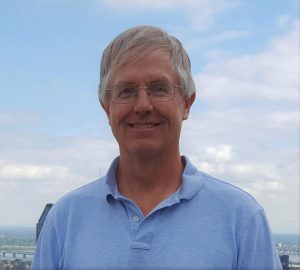 Robert (Bob) Johnk (M’91 – SM’07) received his Ph.D. degree in Electrical Engineering at the University of Colorado in 1990, where he specialized in electromagnetics and antennas.
Robert (Bob) Johnk (M’91 – SM’07) received his Ph.D. degree in Electrical Engineering at the University of Colorado in 1990, where he specialized in electromagnetics and antennas.
Bob recently retired as research engineer from the Institute for Telecommunication Sciences (NTIA/ITS) where he was engaged in advancing the state of the art in radio-channel propagation measurements/analysis and mentoring new engineers in the art of measurement science.
During the development of the FirstNet National Public Safety Radio System, Bob conducted research on in-building wireless propagation and methods for improving in-building public safety communications. Prior to joining NTIA/ITS in 2007, he worked at the National Institute of Standards and Technology (NIST) in Boulder, Colorado for 17 years, where he was the leader of the time-domain fields project.
Bob has received best paper awards from the IEEE EMC Society, NTIA, and NIST. In 2011, Bob received the IEEE EMC Society’s Technical Achievement Award for his work “in the development of free-space time-domain measurement techniques”.
Bob has also received a U.S. Department of Commerce Silver Medal award for his work in Public Safety communications. Bob is a Life Senior member of the IEEE and a member of both Eta Kappa Nu and Tau Beta Pi.
This interview will be conducted by RCA President-Emeritus, John Facella.
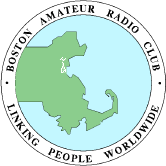 Boston ARC President Brendan Baldonado, NW1S, writes on the BARC mailing list:
Boston ARC President Brendan Baldonado, NW1S, writes on the BARC mailing list:Rusty Moore, K1FVK, writes on the Sci-Tech ARS mailing listL
We just passed the one year anniversary of the great 2023 balloon turkey-shoot, during which the USAF downed a Chinese spy balloon plus three small unidentified balloons, one of which was almost certainly K9YO-15, a radio-equipped pico balloon flown by the Northern Illinois Bottlecap Balloon Brigade. Today the press reported that NORAD is currently tracking another small unidentified balloon, but has determined that it poses no threat to national security. As soon as I heard about this I did a quick check of SondeHub and whatddaya know, there’s K9YO-7 on the same track, over the same area, and at the same altitude as the mysterious unidentified balloon everyone is talking about. The media reports characterize it as a small Mylar balloon, about 50 feet tall (which I take to be the estimated overall height from payload to top of balloon), with a 2-foot square box hanging underneath. None of the news stories I saw mentioned anything about the K9YO balloon’s presence, or about the existence of amateur balloons in general. Surely NORAD would be checking the amateur ballooning maps, wouldn’t they? For that matter, so should serious news teams. Journalism ain’t what it used to be.
CBS News report on the balloon: https://www.cbsnews.com/news/
—K1FVK
From https://hamxposition.org:
If you attended the grand banquet at the 2022 HamXposition you saw Dr. Erickson give a terrific presentation on HamSCI and Haystack Observatory’s ionospheric investigations. —Thanks, K1FVK
MIT News article: https://news.mit.edu/2023/
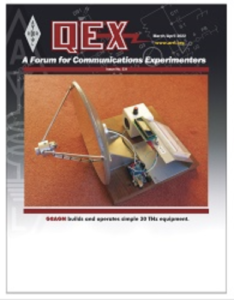 Stu Solomon, W1SHS, writes:
Stu Solomon, W1SHS, writes:Seth Kendall, KC1PZY, writes on July 22, 2023 at 6:27 AM:
HABGab 2023 is officially on for today. We will be launching from:
Tantasqua Vocational Regional High School319 Brookfield Rd, Fiskdale, MA 01518
Frequencies, tracking information, updated countdown, etc:
https://nescitech.org/habgabWe will be starting on site set up at 9am. Launch scheduled for 1pm. We’d love to see you there or hear you on the air!
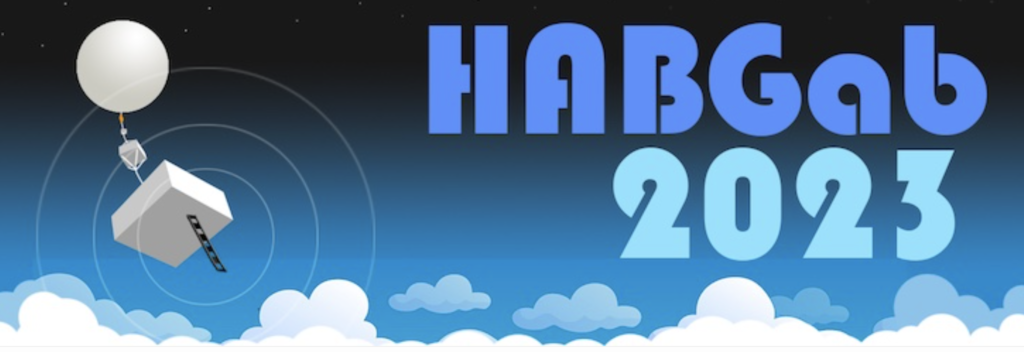
Also traveling onboard will be a number of student projects by members of the StratoScience Lab class at New England Sci-Tech and BFCCPS school in Franklin, MA.
Please be aware that the date of the event is highly dependent on weather and readiness, so make sure to regularly check the HABGab Launch Page for up to date information about the date and instructions for making contact: https://nescitech.org/habgab.
 Rusty Moore, K1FVK, writes on the New England Sci-Tech mailing list:
Rusty Moore, K1FVK, writes on the New England Sci-Tech mailing list:
As seen from Natick, the October 2023 annular eclipse will present about 18% obscuration of the sun, and the April 2024 total eclipse will reach 92.6%. Both are good opportunities for special public astronomy events. Using solar projection and the Lunt solar scope on [New England Sci-Tech]’s new observing deck, NEST could be the go-to spot for Natick residents to get good, safe views of the eclipses and educational content. NEST could (should) also participate in HamSCI’s Solar Eclipse QSO Parties (https://hamsci.org/eclipse) using amateur radio to collect scientific data in front of the public, making for a perfect opportunity to teach about celestial mechanics, astronomical scale, solar physics, space weather, and radio communications all at once. Radios could be operated out of the new STEM outreach trailer and inside the radio room simultaneously. News outlets could (should) be invited to the event as well.
The National Science Teachers Association has collected a bunch of resources for teaching with the upcoming eclipses. Here’s the link to those: https://www.nsta.org/eclipse.
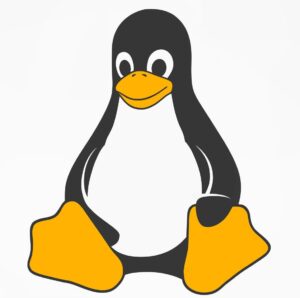 Andy Stewart, KB1OIQ, writes:
Andy Stewart, KB1OIQ, writes:
Hi Everybody,
I have released a new version of the “Andy’s Ham Radio Linux” (AHRL) software collection: version 25a
The previous version (v25) had over 10,100 downloads in about a year.
AHRL is based on Xubuntu 22.04. All of your favorite software has been updated, and a few things have been added, including:
* GridTracker
* some software from the M17 Project
* SDRangel
* Arduino 2.1.0
For more information, and a download link: https://sourceforge.net/projects/kb1oiq-andysham/
I’m really looking forward to seeing folks and giving a talk about AHRL at Hamvention 2023.
Have fun (!) and 73,
Andy
 Seth Kendall, KC1PZY, writes on the New England Sci-Tech mailing list:
Seth Kendall, KC1PZY, writes on the New England Sci-Tech mailing list:
We plan to hoist up our payloads as high as we can over [New England Sci-Tech] this Sunday (May 7th) at 1pm. The payload will be running the full repeater setup and live video transmission for flight.
We’d like to invite anyone who might have line of sight with NEST to try calling in once we start the event to test the functioning and propagation. Keep in mind, the repeater uses low power HTs with homemade Slim Jim antennas, so do not expect the level of performance achieved by the real NEST repeater. It is also expected to get significantly better signal up in free space during the flight than it will on the ground.
We are putting out a call to see if anyone has a long, sturdy gopher pole or extendable mast that could be temporarily mounted on the roof and hold 5 lbs. up vertically without bending.
To participate, here is what you need to do:
We are also looking for a volunteer to try receiving the video signal from some place with direct line of sight that is further than right down the street. Ideally 1-5 miles away (not expecting the kind of propagation we’ll get up in free space).
Joe Fitzgerald, KM1P, writes on the Sci-Tech ARS mailing list:
[New England Sci-Tech Amateur Radio Society] is working with AMSAT to help make a positive ID of these new satellites for inclusion in the AMSAT orbital elements distrubution. If you are so inclined, please listen for any of these new birds and send any observations, i.e. early or late passes based on the Celestrak Two Line element sets described below.Our friends at Libre Space show 16 spacecraft using amateur frequencies on the recent Space-X transporter 7 launch.
https://community.libre.space/t/spacex-f9-transporter-7-2023-04-15-06-47-utc/10255
Celestrak has published element sets derived from Space-X deployment data. See https://celestrak.org/NORAD/elements/supplemental/sup-gp.php?FILE=transporter-7&FORMAT=tle
Celestrak also made an attempt to match Space-X derived TLEs to USSF tracked objects: https://celestrak.org/NORAD/elements/supplemental/transporter.match.txt but I don’t consider that authoritative. Note that RoseyCubesat-1 and INSPIRE-Sat 7 share the same element set which seems strange as I understand that they are two independent spacecraft.
We are particularly interested in INSPIRE-Sat 7. INSPIRE-Sat 7 carries a 435.200 MHz telemetry channel with BPSK mode – GR3UH 9k6 along with an FM transponder and student experiments to be activated after on-orbit checkout.
The following is from https://www.uvsq.fr/inspire-sat-7
“To receive the telemetry, a software has been developed: KissTool . It is available for Windows & Linux:
Linux: https://site.amsat-f.org/download/118791/?tmstv=1680945385
Windows : https://site.amsat-f.org/download/118784/?tmstv=1680945385
The user manual is available in French ( https://site.amsat-f.org/josast-kisstool/ ) and English ( https://code.electrolab.fr/xtof/josast/-/blob/27-new-application-for-spino/ApplicationKissTool/src/site/markdown/UserManual.md ) ”
de KM1P Joe
Tonight’s presentation will be Zoom-only; no in-person presence.
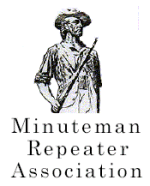 Minuteman Repeater Association membership meeting: Wednesday, 15 March 2023 ~7:30—9:30 pm: Amateur Radio Emergency Data Network (AREDN). Orv Beach, W6BI; Jim Garner, KC1BHD; and Michael Ford, WZ0C. This is a Hybrid meeting at New England SciTech in Natick + ZOOM.
Minuteman Repeater Association membership meeting: Wednesday, 15 March 2023 ~7:30—9:30 pm: Amateur Radio Emergency Data Network (AREDN). Orv Beach, W6BI; Jim Garner, KC1BHD; and Michael Ford, WZ0C. This is a Hybrid meeting at New England SciTech in Natick + ZOOM.
(Members: log into your account on MMRA.ORG to obtain the ZOOM info.
Non-members: send an email to contact@mmra to request the ZOOM info.
Learn what AREDN is all about, what it can be used for, and how you can get started with this technology. Orv, W6BI, will discuss how ham radio networking with AREDN software works and what you need to get started. He’ll also show some examples of user setups and things an AREDN network can be used for. Jim, KC1BHD, will give a demonstration of his AREDN go-kit prototype to be used in ARES activations, at disaster locations, or public service events. Michael, WZ0C, will talk about some of the AREDN efforts in New England along with the propagation testing he and Jim have been doing for this.
Orv, W6BI, was first licensed as WN6WEY in 1967. He’s been into digital ham radio all his life, starting with CW. He started messing around with ham radio networking in 2014, and is now an AREDN Ambassador, one who promotes using AREDN software and helps educate folks on its use. He’s helped deploy network digital radios in Ventura County and western Los Angeles County. He’s also active in coordinating the build-out and maintenance of the wider ham radio network which now spans from California’s central coast south to the Mexican border and east to Las Vegas, comprising over 550 nodes, both on hilltops and at ham QTHs.
Jim, KC1BHD, has always been interested in data transmission in general and for several years, AREDN mesh networking in particular. He lives near Worcester and envisions creating RF access to an AREDN mesh for hams across Massachusetts.
Michael, WZ0C, lives in Maynard and enjoys the amateur radio digital modes. Michael became interested in AREDN last year, connecting with Orv and Jim and learning about their efforts. Michael is hoping to use AREDN to increase the digital presence in Massachusetts. Michael will talk about some of the AREDN efforts in New England along with the propagation testing he and Jim have been doing for this.
 The Northeastern University Wireless Club is hosting a special meeting with the AeroNU Project Horizon project on November 3, 2022 at 7 p.m. in 503 Hayden (club space).
The Northeastern University Wireless Club is hosting a special meeting with the AeroNU Project Horizon project on November 3, 2022 at 7 p.m. in 503 Hayden (club space).
The club will discuss its upcoming collaboration with AeroNU. AeroNU is launching a CubeSat, and NUWC is supporting the construction of a VHF/UHF satellite ground station to be hosted in the NUWC club space. The team from Aero will be presenting on their work, and the communication systems onboard.
 Paul Graveline, K1YUB, of Andover, MA, will present at the 40th Annual AMSAT Space Symposium in Bloomington, Minnesota, on October 21-22, 2022. Paul will present in a session on the CubeSat Simulator.
Paul Graveline, K1YUB, of Andover, MA, will present at the 40th Annual AMSAT Space Symposium in Bloomington, Minnesota, on October 21-22, 2022. Paul will present in a session on the CubeSat Simulator.
The symposium will feature:
* Space Symposium with Amateur Satellite Presentations
* Operating Techniques, News, & Plans from the Amateur Satellite World
* Board of Directors Meeting open to AMSAT members
* Opportunities to Meet Board Members and Officers
* AMSAT Annual General Membership Meeting
* Auction, Annual Banquet, Keynote Speaker and Door Prizes !!
The Crowne Plaza Suites, 3 Appletree Square, Bloomington, MN, is centrally located between the Minneapolis/St. Paul International Airport, Mall of America, Minneapolis Zoo, and Nickelodeon Universe Theme Park. Crown Plaza Suites provides a complimentary scheduled shuttle to and from the airport.
Additional information about the 2022 AMSAT Symposium can be found at https://www.amsat.org.
From nediv.arrl.org:
ARDC has approved a request for RFI hunting equipment for each of the seven sections in the New England Division. The funds should be received in the next few weeks and orders placed for the equipment soon after. Included is both an antenna set and an HF/VHF/UHF transceiver with a spectrum scope. Distribution to each section will accompany training on the equipment. In addition, some high-end equipment will remain in the custody of the Division for sharing when needed in addition to any the ARRL Lab will provide on loan. Any questions can be directed to Rob, k1UI, Assistant New England Director, Spectrum Protection and Use.
Boston amateur and AMSAT member Joe Fitzgerald, KM1P, is mentioned in the September 8, 2022 issue of The ARRL Letter. He describes a tool called JPL Horizons, an online solar system data and computation service that provides access to key solar system data for solar system objects such as asteroids, planetary satellites, planets, the Sun, and select spacecraft:
From The ARRL Letter:
When NASA’s Artemis I rocket launches for its mission to the moon this month, you’ll be able to track it using 70-centimeter beacons known as Outstanding MOon exploration TEchnologies demonstrated by NAno Semi-Hard Impactors (OMOTENASHIs).
Omotenashi is Japanese for welcome or hospitality, and it describes the 70-centimeter beacons as small spacecraft and semi-hard landers of the 6U CubeSat format which will demonstrate low-cost technology to land and explore the lunar surface. OMOTENASHI will be one of 10 CubeSats to be carried with the Artemis I mission.
Brian Wilkins, KO4AQF, says that with the Artemis Real-time Orbit  Website (AROW), anyone with internet access can pinpoint where Orion is and track its distance from the Earth, its distance from the moon, the mission duration, and more. AROW is available on NASA’s website and Twitter account. AROW visualizes data collected by sensors on Orion that are sent to the Johnson Space Center’s Mission Control Center in Houston during its flight. It will provide periodic real-time data beginning about 1 minute after liftoff through the separation of the Space Launch System (SLS) rocket’s Interim Cryogenic Propulsion Stage, approximately 2 hours into flight.
Website (AROW), anyone with internet access can pinpoint where Orion is and track its distance from the Earth, its distance from the moon, the mission duration, and more. AROW is available on NASA’s website and Twitter account. AROW visualizes data collected by sensors on Orion that are sent to the Johnson Space Center’s Mission Control Center in Houston during its flight. It will provide periodic real-time data beginning about 1 minute after liftoff through the separation of the Space Launch System (SLS) rocket’s Interim Cryogenic Propulsion Stage, approximately 2 hours into flight.
Once Orion is flying on its own, AROW will provide constant real-time information. On the web, users can follow AROW to see where Orion is in relation to the Earth and the moon, and follow Orion’s path during the mission. Users can view key mission milestones and characteristics on the moon, including information about landing sites from the Apollo program. Also available for download will be an ephemeris, which provides trajectory data from the flight.
AROW will also provide a set of Orion’s state vectors — data that describes precisely where Orion is in space and how it moves — for inclusion in these tweets once Orion is flying on its own. These vectors can be used for data lovers, artists, and creatives to make their own tracking app, data visualization, or anything else they envision. For more information, read https://www.nasa.gov/feature/
AMSAT member Joe Fitzgerald, KM1P, adds a second online tool, called Horizons. The JPL Horizons online solar system data and computation service provides access to key solar system data and flexible production of highly accurate locations for solar system objects such as asteroids, planetary satellites, planets, the Sun, and select spacecraft. Horizons is provided by the Solar System Dynamics Group of the Jet Propulsion Laboratory.
Fitzgerald says to use “OMOTENASHI” as the Target Body. You can find information and the online app at https://ssd.jpl.nasa.gov/
— Thanks to Brian Wilkins, KO4AQF; Joe Fitzgerald, KM1P; NASA; JPL Horizons, and AMSAT.
 The Wellesley Amateur Radio Society is embarking upon an interesting technical project to develop LoRa nodes at club members’ homes, according to WARS President Dan Brown, W1DAN.
The Wellesley Amateur Radio Society is embarking upon an interesting technical project to develop LoRa nodes at club members’ homes, according to WARS President Dan Brown, W1DAN.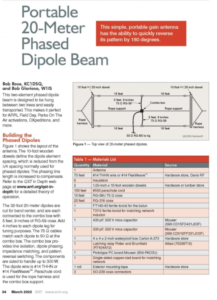 From ARRL News:
From ARRL News: Special Note: The students in the 2019 cubes program had their projects accepted for flight. One project flew on a NASA rocket in June and one flew on a high altitude balloon in September. The 2020 program was cancelled due to COVID. The 2021 project did not fly because of a shipping problem with the carrier, so that project will fly in June 2022.
Special Note: The students in the 2019 cubes program had their projects accepted for flight. One project flew on a NASA rocket in June and one flew on a high altitude balloon in September. The 2020 program was cancelled due to COVID. The 2021 project did not fly because of a shipping problem with the carrier, so that project will fly in June 2022.
CUBES IN SPACE™ – Now accepting 2021-2022 applications
A specialized activity of NE SciTech’s Space Science Club, specifically for students ages 11-17, Cubes in Space™ (CIS), a program by idoodledu inc., teaches students about the atmosphere, rocketry, high-altitude balloons, general laws of physics, and space science. Students work in teams to design and propose experiments to launch into space or a near space environment on a NASA sounding rocket and zero-pressure scientific balloon. Students then submit their proposals and could have a chance to fabricate and fly their projects. Space is limited.
Students attend regular educational CIS curriculum workshops and team meetings in the fall, winter, and spring. GROUP 1 meets on specific Friday evenings 6:30-7:30 pm. GROUP 2 meets on specific Saturday afternoons 3:30-4:30 pm. Regular meetings are usually every other week from December through March. For teams with projects that have been selected to fly, there will be additional prep and build meetings in April and May. The rocket flies in June. The hi-alt balloon flies over the summer, usually in August. We will schedule additional CIS meetings in the fall for students to examine their flown projects when recovered from NASA.
This CIS program is free for student members* of New England Sci-Tech, with a small lab fee** of $45 to cover printed materials and general supplies. Having experience in physics, electronics, or amateur radio is helpful, but not required. Space is limited.
Cubes in Space™ (CIS), a program by idoodledu inc., is a global competition. Out of thousands of entries worldwide, under a hundred get picked to fly. However, our mentors, running this program for the past five years, have had a 100% success rate for CIS projects accepted each year.
Students who successfully complete the program and successfully fly a project will receive an official CIS certificate and may list their CIS success in personal resumes, school transcripts, and college applications.
ORIENTATION MEETING
Get to know you, CIS preliminary overview, and registration:
Attend either Friday November 19, 6:30 pm, or Saturday November 20, 3:30 pm.
FRIDAY WORKSHOPS
Eight Fridays, 6:30-7:30 pm:
Lesson 1 – Dec 3, Lesson 2 – Dec 17, Lesson 3 – Jan 7, Lesson 4 – Jan 21, Lesson 5 – Feb 4, Lesson 6 – Feb 11, Lesson 7 – Mar 4, Lesson 8 – Mar 18.
For those projects chosen to fly, there will be 6 additional prep and build days, some optional:
Apr 1, 8, 29, May 13, 20, Jun 3.
For anyone who will need to miss a Friday lesson, you may attend the same lesson on Saturday. Please plan ahead.
SATURDAY WORKSHOPS
Eight Saturdays, 3:30-4:30 pm:
Lesson 1 – Dec 4, Lesson 2 – Dec 18, Lesson 3 – Jan 8, Lesson 4 – Jan 22, Lesson 5 – Feb 5, Lesson 6 – Feb 12, Lesson 7 – Mar 5, Lesson 8 – Mar 19.
For those projects chosen to fly, there will be 6 additional prep and build days, some optional:
Apr 2, 9, 30, May 14, 21, Jun 4.
For anyone who will need to miss a Saturday lesson, you may attend the same lesson on the previous Friday. Please plan ahead.
[Visit https://nescitech.org/product/cubes-in-spacetm/ for more information.]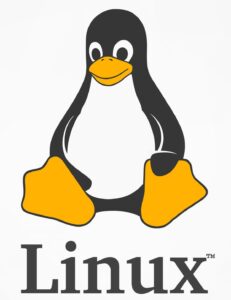 Andy Stewart, KB1OIQ, writes on the PART of Westford mailing list:
Andy Stewart, KB1OIQ, writes on the PART of Westford mailing list:
I have just released version 24e of the “Andy’s Ham Radio Linux” software collection. This is the 20th release since I started this work in 2011. There are quite a few new pieces of software, as well as all of the other programs to which you’ve become accustomed.
To learn more: https://sourceforge.net/projec
Have fun and 73!